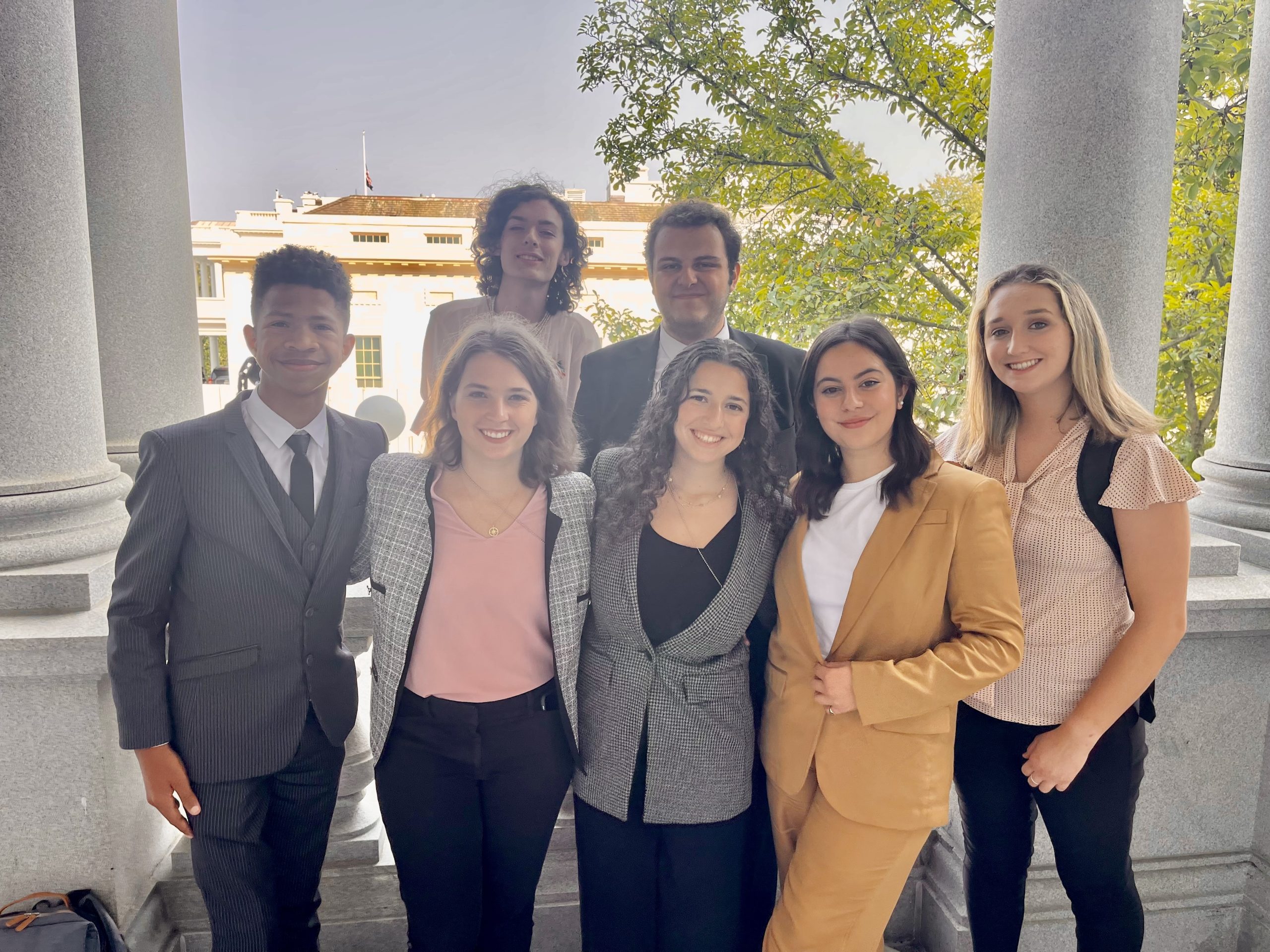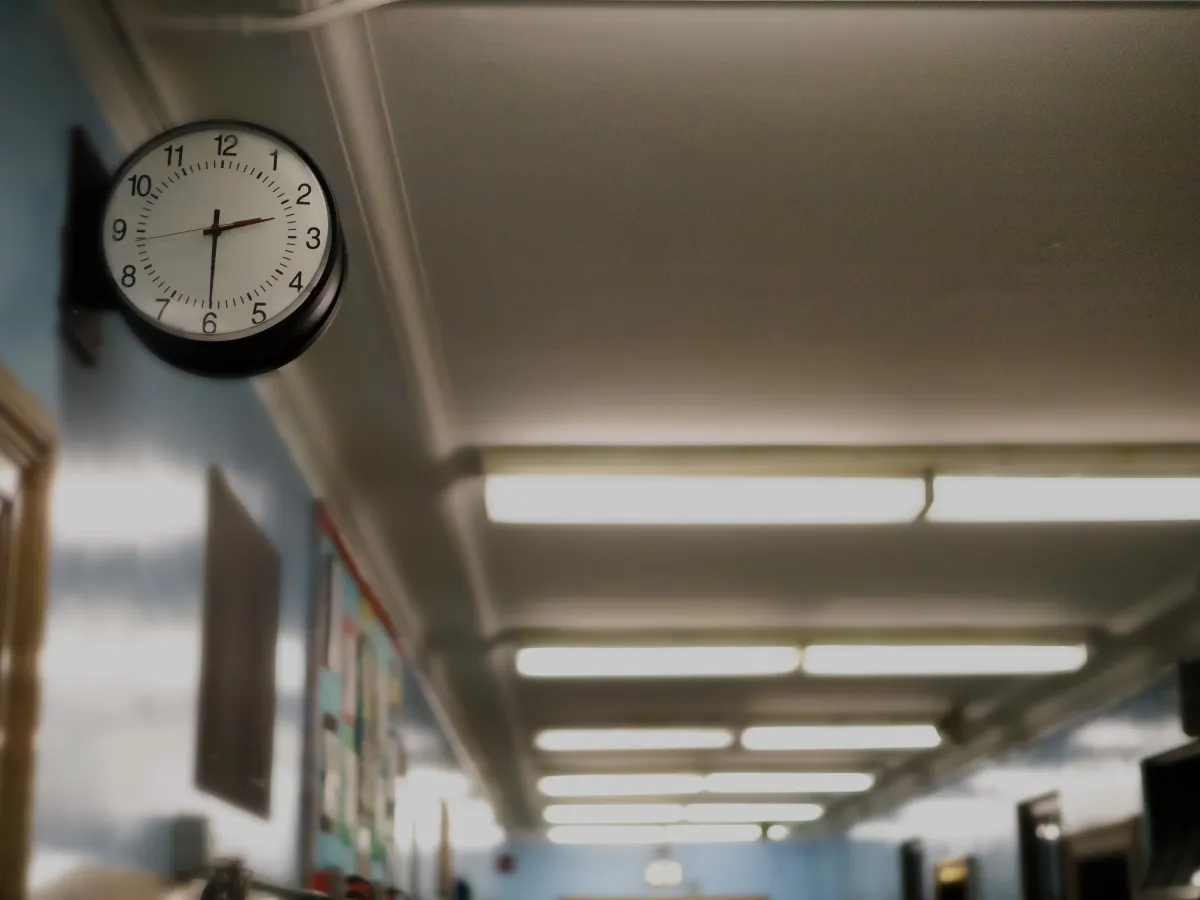Santiago Mayer moved to Southern California from Mexico City in 2017, around the time President Donald Trump’s “Muslim ban” was sparking nationwide protests. “I kept wanting to talk about it with people in my classes and with my friends,” Mayer said recently. “And I realized that many people either didn’t know what was happening, or just really didn’t have the tools to talk about it.”
Mayer formed the nonprofit Voters of Tomorrow in 2019 to boost Generation Z engagement in politics and at the polls. It has been a busy four years for the organization since. Gen Z, the generation born after 1996, has dealt with voting during a pandemic, the rise of election denialism and recent efforts in statehouses around the country to make it more difficult for young people, especially college students, to cast a ballot.
Members of the generation first became eligible to vote in 2015. The first presidential election where a large number of Gen Z voters cast ballots was 2020.
Amid all that, Mayer, 21, studied at California State University, Long Beach, earning a political science degree this spring. The Center for Public Integrity spoke with Mayer as he was preparing a post-graduation move to Washington, D.C., to continue his work with Voters of Tomorrow.
This conversation has been edited for length and clarity.
Q. In 2020, you were part of an initiative called Prom at the Polls. Can you describe where that concept came from?
Prom at the Polls was really Voters of Tomorrow’s first big initiative. I was Class of 2020. And we missed out on prom, we missed out on graduation.
We knew that all of our friends had maybe already bought outfits, they were already thinking, “Okay, who am I asking out to prom?” So we really tapped into that energy and that frustration and redirected that energy towards voting.
It was honestly a lot more successful than we were hoping for. I mean, I’m a big Star Wars fan. So the second I saw Mark Hamill tweet about it, it was like, “Okay, I made it. We’re here.” And we got so much buy-in from so many people, it was really just phenomenal to see videos and photos of people lined up to vote, wearing dresses and wearing suits, and asking each other out, and asking people to go vote with them.
Q. In recent months in 2023, we’ve seen this concerted effort from Republican-controlled legislatures in states like Ohio and Idaho to make it more difficult for young people to vote.
The conservative election denier Cleta Mitchell recently said, “They basically put the polling place next to the student dorm. So they just have to roll out of bed, vote, and go back to bed.” Why do you think these politicians are so aggressively going after student voters?
Because they’re terrified of us. That’s the simple answer. They are terrified because they know that young people are not buying what they’re selling. We’ve seen it in 2018. We’ve seen it in 2020. We’ve seen it in 2022.
Young people are turning away from the hate-filled platform that many people on the right have. I don’t think that describing Gen Z as a Democratic generation is accurate. What Gen Z is really looking for is a future that works for them, and a government that works for them, and that protects them.
And what we have seen from people on the right, especially over the last few years, and with people like Cleta Mitchell, is that they acknowledge what is happening, they know young people are rejecting them. But they refuse to really turn their platform around. And they are much more interested in continuing this wave of hate and harassment against LGBTQ+ rights, of turning back rights that my generation has never lived without, like abortion rights.
[They are] trying to figure out a way to make young people not be able to vote. And we’re seeing that in Ohio, we’re seeing it in Florida. We’re seeing it in Texas, where there’s really a coordinated effort to make voting more complicated and harder for young people.
Q. A lot of the conversation around Gen Z voters is about college students and voting sites near campus. But there are also millions of young people who don’t attend college. What can groups like yours do to help mobilize those people?
The way that Voters of Tomorrow works, it’s really open to everyone. We obviously have concentrations of young people on college campuses, but our outreach is not limited to those college campuses.
I think everything has to be locally driven. We really work with our local chapters to understand what they’re doing, what young people in their area want to do, and support that. Whether that’s introducing bills in a state legislature, whether that is working and doing voter registration drives in parks or community centers, outside of schools, or whether that’s literally going out to the state capitol and distributing books with voter registration information.
The goal really is to find the young people wherever they are, meet them there and allow them to become an active part of politics and government.
Q. Do you think that the parties do an effective job of reaching out to and engaging young voters?
We were just talking about how there’s a concentrated effort to stop young people from voting on one side, right. And that’s obviously not all Republicans, there are Republicans who have actually been pretty good about working with young people. But we do see that from that side.
On the Democratic side, I think there’s been a realization over the past few cycles that young voters are a key part of their constituency, especially as we gear up for ‘24.
Q. Voters of Tomorrow has several policy areas that you focus on: climate change, economic issues, democracy, others. Do you think that the relatively low turnout among young voters — at least as compared to older voters — reflects that candidates aren’t running on or speaking to the issues that are relevant to Gen Z?
The way we approach the issue is by what we call “the cycle of disengagement.”
And that means young people may not be super engaged. And thus, politicians don’t feel like they need to speak to them, or represent them. And until politicians stop ignoring us, young people aren’t going to be super engaged. It’s like this self-confirming cycle.
What we’ve seen over the past few elections is both young people realizing that, and actually turning out to make sure that politicians realize that they are an important voting bloc.
Q. Mindy Romero at the University of Southern California recently wrote that even though youth turnout improved in the 2022 midterms, it was still low compared to overall voter turnout. Only 27% of those 18-29 cast ballots. What will it take to get that number up?
It takes more than one cycle, right? We have been building at this.
Cycle by cycle, that number keeps increasing. And if organizations like Voters of Tomorrow continue to invest, if the parties continue to invest, if the candidates recognize the value in young voters, we’re going to continue to see that number rise, because also young people are realizing the power that they have.
Q. Along with young voters, Latino voters are underrepresented in the electorate. And there’s a lot of overlap there, as Latinos as a group skew pretty young. What can groups like yours do to help engage and mobilize young Latinos?
I think in the past, we’ve had this misconstrued idea that the way to get Latinos is to go out there and talk somewhat decent Spanish, right? I mean, I’m obviously an immigrant, I didn’t grow up in the U.S. and my experience as a Latino in the U.S. is very different from someone who has lived here their entire life. But I really do think that just platitudes, like talking Spanish, isn’t going to cut it. You need to show actual policy-based solutions to problems that a lot of Latinos have.
And I think what we have seen is sort of the compartmentalization of Latinos into “they only care about immigration.” When in reality, Latinos, both young and old, are a very diverse demographic, and treating them as a complex part of the electorate, rather than this group in a box, I think that’s very important.
Q. What are you paying attention to, as we gear up for a presidential election next year?
The attacks on young people. We have seen pretty clearly that the far right is engaged in what we call a war on youth, and that encompasses everything from banning books to suppressing our voting rights. So seeing what they are doing on that front and fighting back against it is probably our biggest concern right now.
But we’re also seeing and we’re also tracking really what sort of investments are coming into this space. Historically, the youth space has not been one that is well funded.
We’re paying attention to the emphasis that the political infrastructure overall places on young people and seeing what the priorities are. Like, are they investing in campus organizers? Are they investing in TikTok influencers? Are they investing in online ads?
Figuring out what people are doing, I think, is going to be particularly important moving into 2024, just because it is going to be a substantially different election from 2020, without COVID. And the ways that we can organize young people are going to be so much different.




